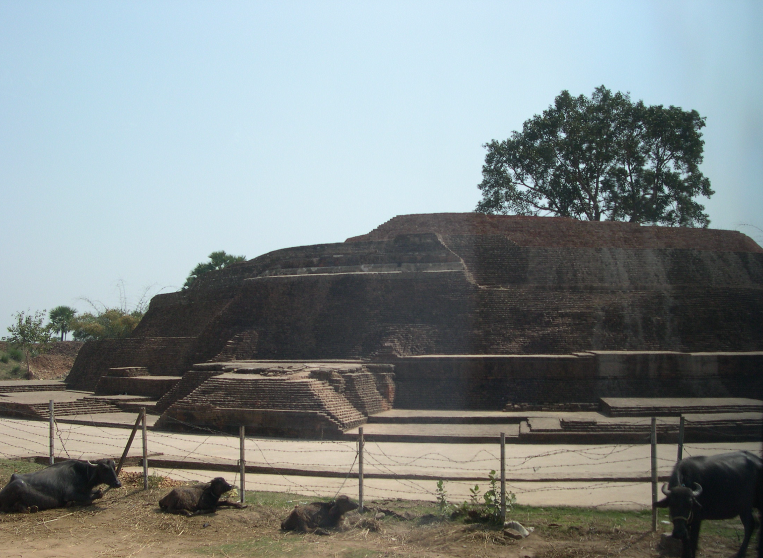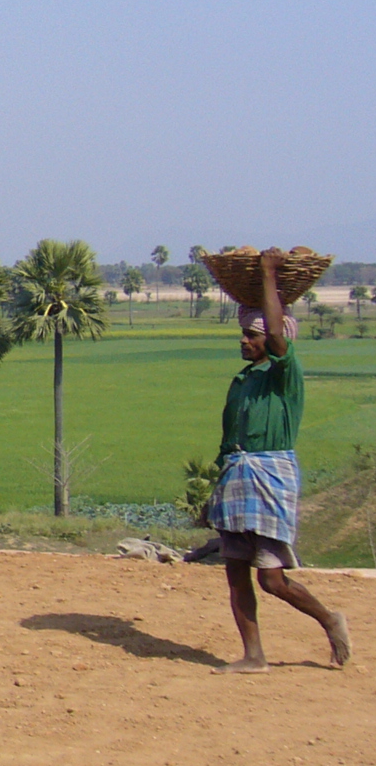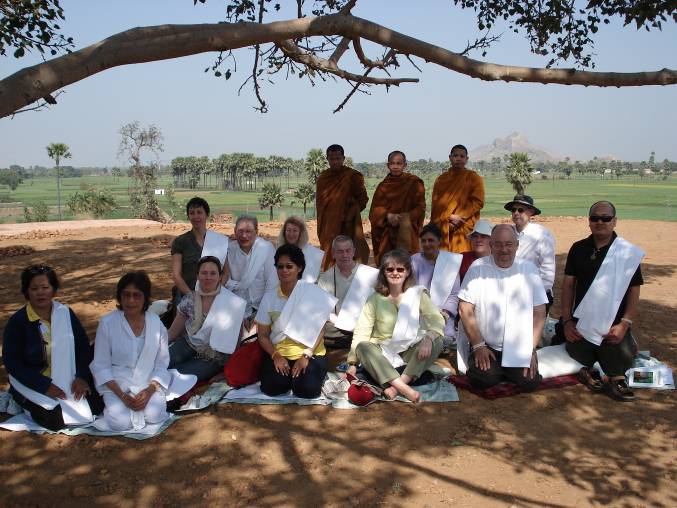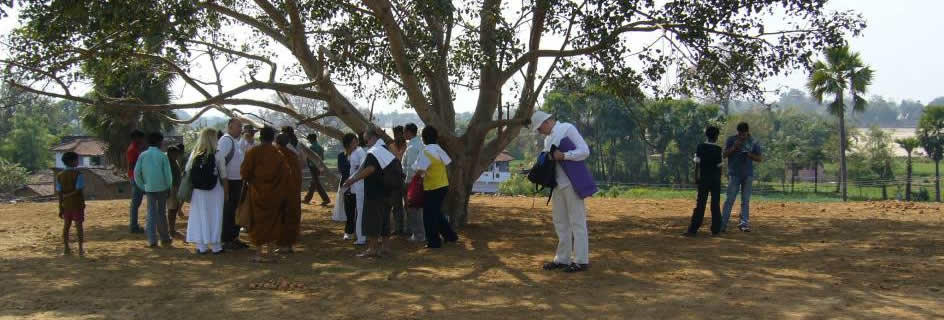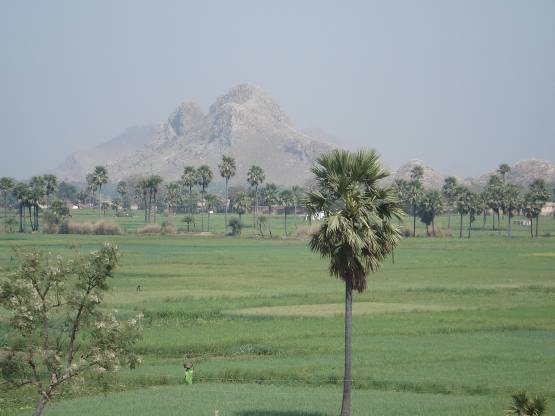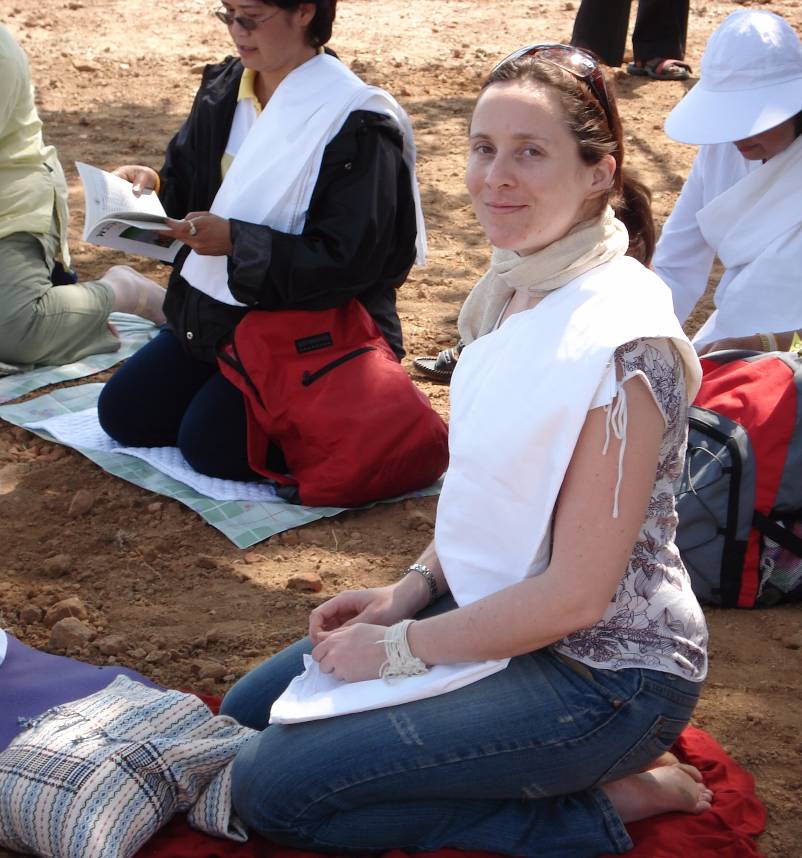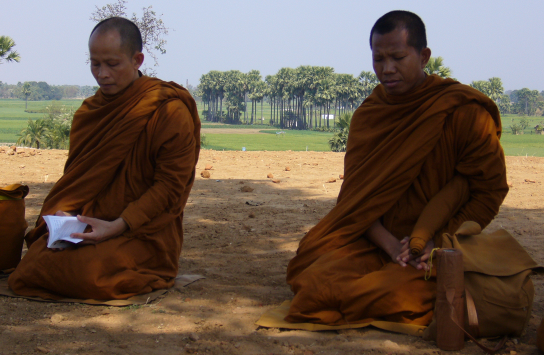Arriving in Bodh Gaya
Arriving at Gaya airport, slightly shell-shocked after an early start
in Bangkok, I watched Luangpoh Sudhiro and Luang-ah jet-monking* down
the tarmac towards the terminal and wondered ‘why are they going
so fast?’ This became clear when we saw the long stationary queue
at immigration, -I’d forgotten he’s been here before! However,
rather than having to join the queue, our guide Santos, who had travelled
with us from Bangkok, took out passports and told us to wait. We stood
in a group and waited while he had words with the immigration officer
and soon we were ushered through to the other side, feeling a bit guilty
about queue jumping, but not quite enough to protest and get to the back
of the now even longer queue. This was the first of many times when we
seemed to waltz in and get the best seats in the house. After going to
our hotel and having some lunch, we got on our tour bus and set off for
Sujata’s House. This was a stupa where it is thought that she lived
and on the hill is a Bodhi tree. I was quite shocked to find myself in
India and was feeling apprehensive about getting off the bus. I had been
on a family holiday to Delhi many
years before and I remembered being besieged by begging children and hawkers
whenever we emerged. Someone started to warn us about not talking to the
people there and it being better not to give money to the children and
it all started coming back to me. After the calm nature of Thailand, where
travelling with monks to holy places is given great respect, it seemed
to me then that for the local people we were just an opportunity to sell
wares or beg some rupees. It was with mixed feelings that I got off the
bus and started walking with the group, up onto the remains of the stupa
towards Sujata’s Bodhi tree. We sat under the tree wearing the white
pilgrim’s shawls, that we’d been given, for the first time.
We did some chanting and the monks chanted the special Abhidhamma verses
for Sujata that are traditionally chanted for the dead. It made me happy
that this place honoured a beautiful woman who had done something very
simple, -a generous offering of milk rice to the Buddha, who was nearly
dying of starvation, and that this represented for him the path away from
asceticism and onto the middle way. I found the fact that she was allowed
to be beautiful particularly pleasing, somehow I had imagined that this
wouldn’t have been proper or at least that she would have had to
cover it up. But I suppose the Buddha didn’t have to worry about
being distracted by beautiful people.
*'Jet-monk’ – a phrase coined by the Bolton group for Luangpoh Sudhiro’s ability to zoom along and up as if he was wearing a jet pack!
